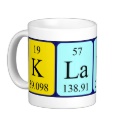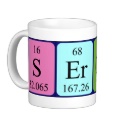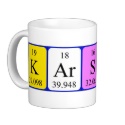|
|
Reference type: Journal
Authors: Defreese JL, Hwang SJ, Parra-Vasquez ANG, Katz A
Article Title: Molecular motion of tethered molecules in bulk and surface-functionalized materials: A comparative study of confinement.
Publication date: 2006
Journal: Journal of the American Chemical Society
Volume: 128
Issue: (17)
Page numbers: 5687-5694.
DOI: 10.1021/ja0556474
Abstract: Achieving high degrees of molecular confinement in materials is a difficult synthetic challenge that is critical for understanding supramolecular chemistry on solid surfaces and control of host-guest complexation for selective adsorption and heterogeneous catalysis. In this Article, using 2H MAS NMR spectroscopy of tethered carbamates as a molecular probe, we systematically investigate the degree of steric confinement within three types of materials: two-dimensional silica surface, bulk amorphous microporous silica, and bulk amorphous mesoporous silica. The resulting NMR spectra are described with a simple two-site hopping model for motion and prove that the bulk silica network severely limits the molecular mobility of the immobilized carbamate at room temperature to the same degree as surface-functionalized materials at low-temperatures (~210 K). Raising the temperature of the bulk materials to 413 K still demonstrates the effect of confinement, as manifested in significantly longer characteristic times for the immobilized carbamate relative to surface-functionalized materials at room temperature. The environment surrounding the carbonyl functionality of the immobilized carbamate is investigated using FT-IR spectroscopy, which shows the carbonyl stretching band to be equally shifted for all materials to lower wavenumbers relative to its noninteracting value in carbon tetrachloride solvent. These results suggest that electrostatic interactions between the carbonyl of the immobilized carbamate and silica surface may play an important role in confining the immobilized carbamate and nucleating the formation of a pore wall close to the immobilized carbamate during bulk materials synthesis.
Template and target information: 3-Triethoxysilylpropyl-carbamic Acid 1-Phenyl-1-deutero-ethyl Ester
|


 Klaus periodic table name mug
Klaus periodic table name mug







 Sergey periodic table name mug
Sergey periodic table name mug







 Karsten periodic table name mug
Karsten periodic table name mug






